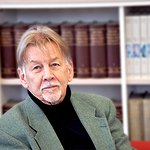Religious Pluralism and Contention in Chosŏn Korea

After Buddhism and Confucianism were introduced to the Korean peninsula around the same time they coexisted peacefully for about a millennium, but the establishment of a new dynasty in 1392 that adopted Neo-Confucianism as its ideology changed the situation quite drastically. While this is often characterized with the slogan "veneration of Confucianism and suppression of Buddhism," Buddhism in some form continued to flourish and the relationship between the two was highly complex. In the past it often has been misrepresented and the Buddhism of this period in Korean history without much nuance characterized as the (degenerated) faith of women and the lower classes.
In recent years, researchers increasingly have explored the intricacies of this relationship and this project is an effort to contribute to this, as the responsible researcher has tried to do in his earlier work, this time primarily by focusing on apologetic works produced by Buddhist monks to refute Confucian objections to Buddhism. An early instance of such apologetics is Hyŏnjŏng non (Articulating the Correct) by Kihwa (1367-1433), which may be regarded as a rebuttal of the arguments of a prominent anti-Buddhist intellectual. Perhaps the most striking example, however, is a lengthy petition (reputed to be the longest in Korean history) to the government by the monk Paekkok Tŭnggye (1617-1680), which was written at a time when government policies with regard to Buddhism were unusually, and exceptionally, harsh. Reflection on these apologetics and actual form of Buddhist practice in this era may throw some light on the relationship between ideology and practice and the emergence or existence of what one might possibly call a secular mindset. A consideration of these issues also may be useful for a discussion of the definition of religion.
Beteiligte Personen


